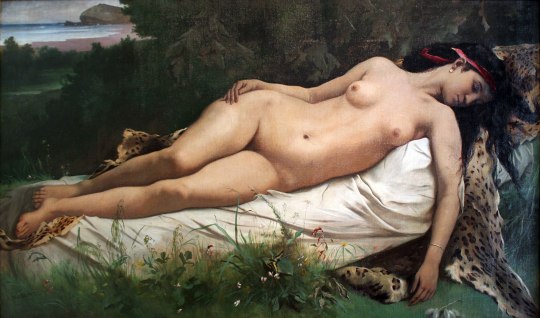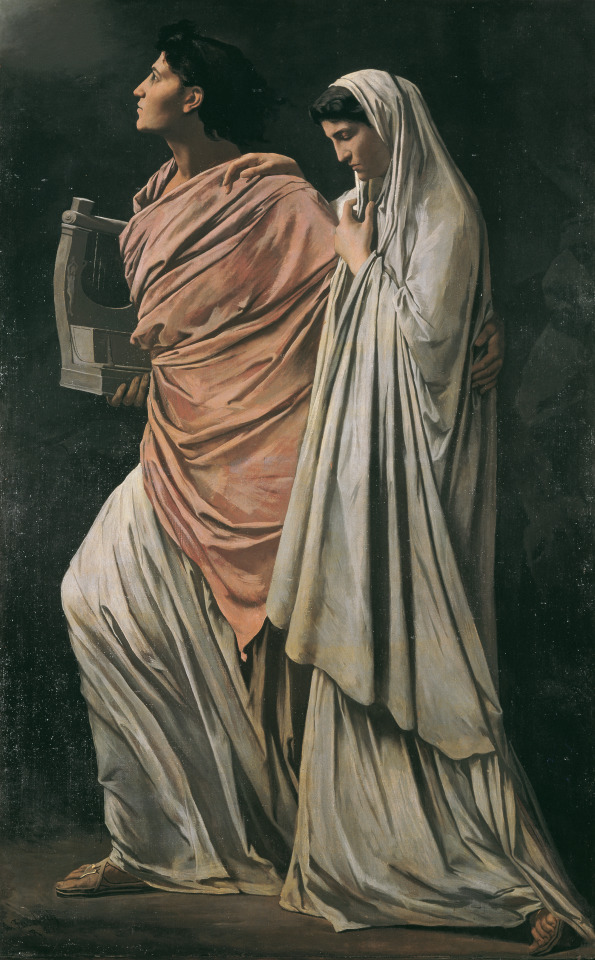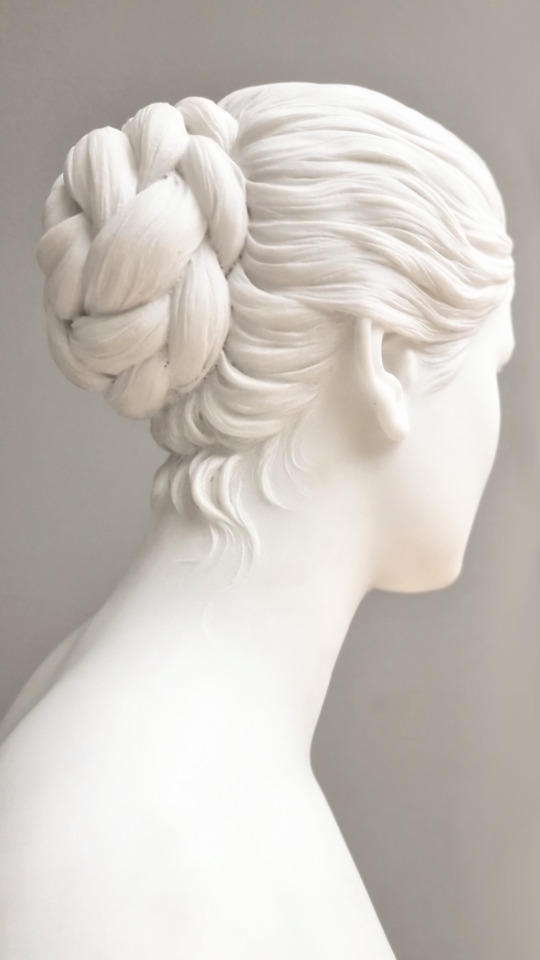#german neoclassicism
Explore tagged Tumblr posts
Text

Ruhende Nymphe by Anselm Feuerbach (1870)
#anselm feuerbach#art#paintings#fine art#19th century#19th century art#neoclassicism#neoclassical#neoclassical art#painting#german artist#german art#mythology#greek mythology#bacchante#maenad#classic art
3K notes
·
View notes
Text

Anselm Feuerbach (German, 1829-1880)
Bianca Cappello
178 notes
·
View notes
Text

Orpheus and Eurydice, Anselm Feuerbach, 1869
#art#art history#Anselm Feuerbach#mythological painting#classical mythology#Greek mythology#Orpheus#Eurydice#Orpheus and Eurydice#Neoclassicism#Neoclassical art#German art#19th century art#oil on canvas#Belvedere#Österreichische Galerie Belvedere
2K notes
·
View notes
Text

Carl Schlüter, Fraulein Bierling (1883)
Displayed at Albertinum, Dresden
Picture credits belong to this blog
#seeing her in this room made me realize what Pygmalion felt like#she looks so soft#art#sculpture#olga's diary#marble sculpture#19th century art#my photography#german art#art gallery#women in art#classical art#neoclassicism#greek aesthetic#neoclassical#marble statue#sculpture art#sculptures#art history#light academia#light academia aesthetic#dark academia aesthetic#dark academia art#dark academia#light aesthetic#princesscore
5K notes
·
View notes
Text

Johann Heinrich von Dannecker (1758-1841) "Lesbia and her Sparrow" Marble Neoclassical
#sculptures#art#artwork#ancient rome#female portrait#johann heinrich von dannecker#marble#marble statue#fine art#neoclassical#neoclassicism#german artist#female figure#bird#birds#sparrow#animals#roman poetry#drapery
1K notes
·
View notes
Text

Undine Rising from the Waters, Chauncy Ives, marble on a rouge pedestal, 1884
#art#sculpture#marble#marble statue#classical#19th century#19th century art#aesthetic#goddess#ethereal#artist#art museum#neoclassical#neoclassicism#Yale University#yale university art gallery#conneticut#new haven#water nymph#undine#veil#german folklore
83 notes
·
View notes
Text

Anselm Feuerbach (German, 1829-1880)
Self Portrait as a Young Man
23 notes
·
View notes
Text

Self-portrait as David with the head of Goliath Johan Joseph Zoffany
#german art#Johan Joseph Zoffany#art#painting#art history#portrait#conceptual#self portrait#19th century#david and goliath#neoclassicism
195 notes
·
View notes
Text

Queen Theresa of Bavaria
(Born Princess of Saxe-Hildburghausen)
Artist: Joseph Karl Stieler (German, 1781–1858)
Title: German: Königin Therese von Bayern im Krönungsornat
Genre: Portrait
Style: Historical Period Neoclassicism - 1780-1820 & Romanticism - 1810-1870
Date: 1826
Collection: Neue Pinakothek, Munich, Germany
Queen Theresa (1792-1854) was a daughter of Frederick, Duke of Saxe-Altenburg, and Duchess Charlotte Georgine of Mecklenburg-Strelitz, eldest daughter of Charles II, Grand Duke of Mecklenburg-Strelitz. As a child she had grown up in the rather modest capital of her father’s small duchy of Saxe-Hildburghausen, and not in his later capital of Altenburg, which he acquired after the Saxon dukes reorganised their states in 1826. In 1809, Theresa had been on the list of possible brides for Napoleon, but following the latter’s marriage to the Archduchess Marie-Louise, she married the Bavarian Crown Prince Ludwig, on 12 October 1810. Their wedding was the occasion of the first ever Oktoberfest, which has been repeated almost every year since.
Her husband succeeded as king in 1825 but his numerous love affairs caused her some pain, which she tolerated while refusing to allow his mistresses to attend her at court. On one occasion, in 1831, she left the capital to make her disapproval clear – nonetheless, despite the difficulties in their marriage she was the mother of nine children, the oldest, Maximilian, succeeding as king when Ludwig was deposed following the 1848 revolution. Therese proved to be a capable royal consort, heading the government during her husband’s frequent foreign trips, and having some considerable political influence. She was particularly popular with the Bavarian public and was considered the embodiment of an idealised image of queen, wife and mother and was involved in a great number of charitable organisations for widows, orphans and the poor. She was the object of great sympathy during her husband’s very public infidelity with the notorious courtesan, Lola Montez, which contributed to the demands for his abdication in 1848.
This painting must be particularly noted for the extraordinary attention to the queen’s silk embroidered robes, her bracelets, necklace and earrings and the splendid tiara placed alongside the royal crown. Her robe is embroidered with gold leaves and flowers and along the bottom edge the blue and silver diamond lozenges of the Wittelsbach arms are sewn into gold edged ovals. An ermine robe hangs from over her shoulder to the ground and in her left hand she holds a gold bejewelled fan. Despite its small scale this superbly executed portrait holds the viewer’s attention in every detail, and is a testament to the artist’s mastery of grand, royal portraiture.
#queen theresa of bavaria#german painting#portrait#german royalty#royal monarchy#queen#joseph karl stieler#historical period#neoclassicism#romanticism#19th century european
7 notes
·
View notes
Text


Gothic Cathedral by a River (in tedesco - Gotischer Dom am Wasser) - Karl Friedrich Schinkel (1813)
(Due diverse illuminazioni)
9 notes
·
View notes
Photo


The Alte Nationalgalerie is a listed building on the Museum Island in the historic centre of Berlin, Germany.

© timo bernhard, all rights reserved
analoglens
#neoclassicism#1800s art#alte nationalgalerie#neoclassical architecture#analog photography#karl friedrich schinkel#german classics#architectural phenomenon#light academia#analoglens#berlin#museum#art#art photography#photooftheday
1K notes
·
View notes
Text

Anselm Feuerbach (German, 1829-1880)
Medea an der Urne
1K notes
·
View notes
Text

William Fermor
Artist: Anton Raphael Mengs (German, 1728–1779)
Style: Neoclassicism
Genre: Portrait
Date: 1757
Medium: Oil on Canvas
Collection: Ashmolean Museum, Oxford
The eldest son of Henry Fermor of Tusmore, Oxfordshire, William Fermor (1737–1806) went on the Grand Tour in 1757–1758. Like other English visitors to Rome, he had his portrait painted by both Mengs and Pompeo Batoni: the latter portrait (1758) is now in the Kress Collection, Museum of Fine Arts, Houston. His elegant costume is not masquerade dress, despite the old inscription. Mengs's portraits are sober and frank in approach, with a polished finish.
#portrait#william femor#young man#anton raphael mengs#neoclassicism#18th century painting#england#german painter#english culture#red coat
1 note
·
View note
Text

"The pageants that greeted Anne as she processed through the City to her coronation included three with neoclassical themes. The first of these, at “gracious churche corner” – the turn from Fenchurch Street into Gracechurch Street – showed “mounte pernasus with the founteyne of helicon.” Figures of Apollo and the Muses were accompanied by epigrams and posies written in gold at their feet, praising Anne. The pageant was provided by the merchants of the Hanse, the resident community of North German merchants, and was almost certainly designed by Hans Holbein. The second neoclassical pageant, at the Conduit in Cornhill, showed the Three Graces; while the third, at the Little Conduit in Cheapside, depicted the Judgement of Paris. Other pageants continued the medieval tradition of identifying a queen consort with the Virgin Mary and other biblical heroines and saints; part of their function, in the wake of the King’s divorce, the schism from Rome, and extensive political upheaval, was to assert continuities with the past. However at the same time the introduction of neoclassicism was a significant innovation, identifying Anne’s elevation with the creation of a new, independent England requiring a new language of symbolism." - Anne Boleyn’s legacy to Elizabeth I: Neoclassicism and the iconography of Protestant Queenship, Helen Hackett
#perioddramaedit#anne boleyn#the tudors#history#lana del rey#natalie dormer#art deco#tudor history#tudor era#tudorsedit#thetudorsedit#tudor dynasty#anneboleynedit#natdormeredit#lanadelreyedit#henry viii#b&w#perioddramasource#periodedit#perioddramacentral#perioddramasonly#16th century#english history#queen anne boleyn#historyedit#royal history#period drama#period drama costumes#thetudorsdaily#tudorerasource
63 notes
·
View notes
Text
German Academic Art

Symposium or Das Gastmahl des Platon (The Banquet of Plato) by Anselm Feuerbach (1869)
165 notes
·
View notes
Text

Anton Raphael Mengs ( German, 1728-1779)
5 notes
·
View notes